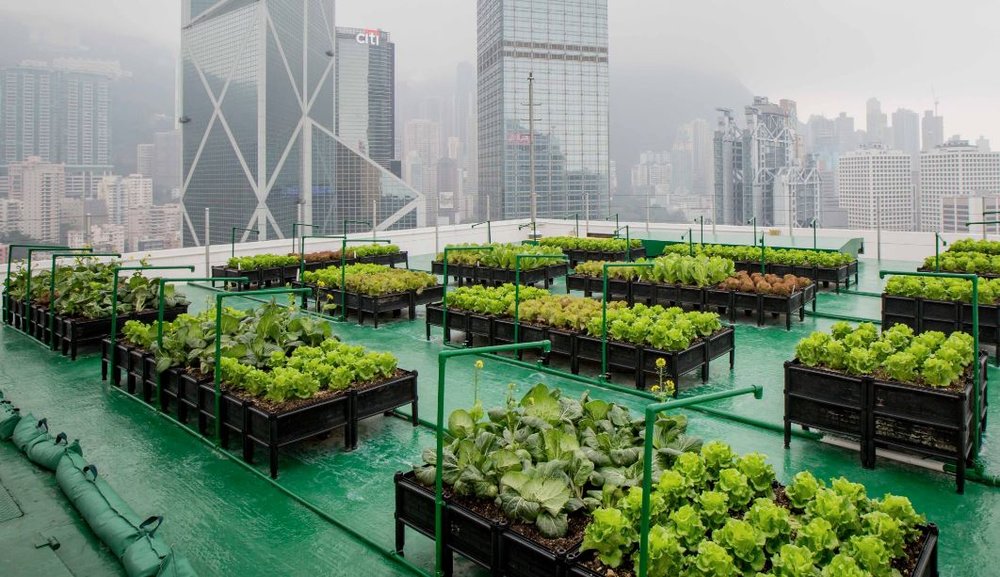Rumored Buzz on City Blooming
Rumored Buzz on City Blooming
Blog Article
7 Easy Facts About City Blooming Shown
Table of ContentsThe Single Strategy To Use For City BloomingThe 3-Minute Rule for City BloomingThe Definitive Guide for City BloomingThe Buzz on City BloomingThe Ultimate Guide To City Blooming
Intrigued in growing food for sale in the City of Chicago? Below is a checklist of often asked inquiries pertaining to the guidelines and regulations that farmers ought to consider when intending an urban farming project.
The zoning modification does not customize any type of other codes managing composting, building licenses, acquiring or leasing City possessed home, organization licenses or ecological contamination. There are existing codes that regulate these problems and they remain in full result and may apply to your job. Community gardens are typically possessed or handled by public entities, public organizations or community-based companies and maintained by volunteers.
Urban farms grow food that is meant to be offered, either on a nonprofit or for-profit basis. Because of their business function, city ranches require an organization license. Yes. A neighborhood yard is allowed to offer excess generate that was grown on website if the sales are accessory or subordinate to the yard's key function explained above.
7 Easy Facts About City Blooming Described
The amount of compost material can not go beyond 25 cubic backyards at any kind of provided time according to the requirements in 7-28-715 of the City's Municipal Code. Since the soil at the majority of brand-new garden sites needs amending, compost, soil, timber chips, or other materials can be obtained to create or enhance the growing room.

If a structure permit is required after that the hoophouse will certainly be considered an accessory structure. You can learn more about the structure license requirements by contacting the Department of Buildings. The 25,000-square-foot dimension restriction is meant to stop a solitary area garden from dominating a given block or detracting from the block's existing residential or business character.
The limit does not put on gardens situated in Public Open Area (POS) areas. Can there be greater than one area yard that is 25,000 square feet on a solitary block? Yes. The dimension limit relates to individual yards, not to private blocks. No. Fencing is not needed, however, gardens that have big parking lot may be needed to set up fence or various other landscaping functions.
Getting My City Blooming To Work
B1 & B2 areas call for that all commercial usage tasks be performed inside. Is secure fencing required for urban farms? Fencings might be called for, along with landscape design and screening, for specific parking areas and outdoor job or storage areas depending on location and the particular activity taking place.
Urban farms require structure licenses and zoning approvals prior to construction (indoor plants). Various other types of city review may be called for depending on details structures, activities, dimension, landscape design, licensing, public heath and stormwater management concerns.
The Department of Company Matters and Consumer Defense can help establish the certain type of company license that's called for. Off road auto parking is required for the majority of business jobs in Chicago. The required number of auto parking rooms is based on the number of workers working on site and not the square video of the growing space.
An Unbiased View of City Blooming

An urban ranch can market garden compost product generated on site, nonetheless, the procedure has to comply with the policies in 7-28-715 of the Chicago Municipal Code. Aquaponic systems are allowed indoors on metropolitan farms in many zoning areas.
Up to five hives or colonies of honey bees might be maintained as an accessory usage. However, beekeepers should sign up with the Illinois Division of Farming. For additional information about the suggested zoning amendment you may get in touch with the Department of Real Estate and Economic Development, Bureau of Planning and Zoning at 312.744.8563.
Farming in cities and metropolitan areas A metropolitan farm in Chicago. Urban farming describes numerous methods of cultivating. https://anotepad.com/note/read/ewb5qah3, processing, and dispersing food in urban locations. The term additionally puts on the area activities of animal husbandry, aquaculture, beekeeping, and horticulture in a city context. Urban agriculture is identified from peri-urban farming, which occurs in country locations beside suburban areas.
Not known Facts About City Blooming
It can include a motion of natural cultivators, "foodies" and "locavores", that seek to form social networks founded on a common values of nature and neighborhood holism. These networks can develop using formal institutional support, becoming incorporated right into regional town planning as a "change community" movement for lasting urban growth.
The more direct accessibility to fresh veggie, fruit, and meat products that might be realised through city agriculture can enhance food protection and food safety and security while lowering food miles, resulting in reduced greenhouse gas emissions, consequently adding to climate adjustment reduction. Several of the initial proof of city agriculture originates from Mesopotamia.
Report this page